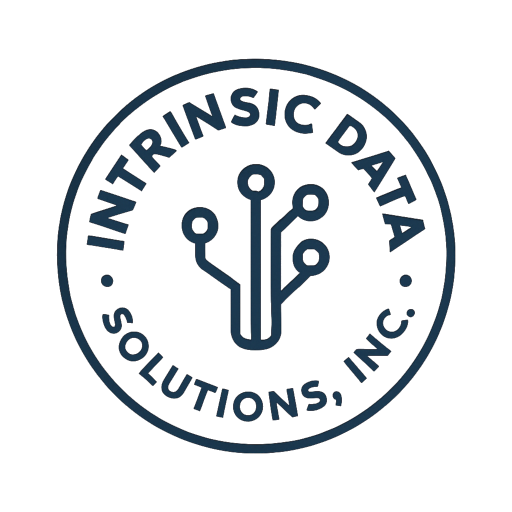If you’ve been in business for any period, you will quickly realize that duplicate records can happen in any CRM product. Unfortunately, Salesforce is not unique in this problem.
There are many ways that duplicates find their way into your data system. For example, they can be created by personnel entering data into the system, an automated process that creates records based on some criteria, customers entering duplicate information on a web-to-lead process, insufficient data from a third-party vendor, etc.
As a result, several common problems arise that will cause chaos in any business or organization:
- Increased spend of marketing dollars for the same Account
- Wasted money spent on data storage space that isn’t needed
- Broken or flawed communications with customers or donors
- The appearance of aggressive agents or just disorganization as a whole, thus resulting in lost or reduced sales/donations
- Staff turmoil regarding commission conflicts, delivery dates, and so much more
- Etcetera.
Today, we will talk about a six-phase process to get your organization cleaned up and functioning correctly.
The steps that we look at include:
- Determine how the duplicates got there in the first place
- Data Requirements
- Process Requirements
- Tooling Selection
- Implementation
- Ongoing Maintenance
1. Determine how the duplicates got there in the first place:
Once you have duplicates in a Salesforce object (Contact, Account, Product, Leads, and Opportunities), determine how it got there. Here are a few areas to look at:
- Are there any automated processes in your system that are creating records?
- Do you buy data from a third-party vendor who may be providing duplicate records?
- Do you currently allow web-to-lead transactions from your website without active duplication rules?
- Are personnel appropriately trained on how to identify duplicate records?
- Are you and your team up to date on Salesforce best practices? If you don’t know what they are or need a refresher, take a look at this link on Trailhead. You’ll need to schedule 45 to 60 minutes to get through it.
If you can determine how the duplicates are getting into your system in the first place, you can eliminate a lot of copies before they get out of hand.
2. Data Requirements:
What are the objects that Salesforce recommends you should focus on first:
- Business accounts
- Contacts
- Leads
- Person accounts
- Records created from custom objects
Since you are looking at the individual objects (Account, Contact, etc.), you also want to determine if yous should look across objects, such as the Contact to the Account, or both.
3. Process Requirements:
Before starting the process, it is essential to ask yourself these basic questions:
- Do I need only a one-time cleanup, prevention, or both?
- Can one tool do everything I need, or do I need to look into multiple deduping solutions?
- Can I automate the process? If so, how often will I need to run it?
- Who needs to have access to the data? What happens if a merge is required (this process is usually irreversible)? What are the current merging rules that are in place for my organization? Will the staff be available when the process is running?
- How are new records created in my organization?
- Are there any compliance and legal issues (record retention guidelines, GDPR)?
- How much is my budget?
- What are the primary goals I’m trying to accomplish by performing a deduplication process?
4. Tooling Selection:
Salesforce offers a Duplicate management tool available to and free of charge for Professional, Enterprise, and Unlimited Editions.
In addition to the Salesforce tools, other tools are available on the App Exchange. At the time of this writing, these are the top ten:
- DupeCatcher: prevent duplicates in real-time
- Duplicate Check for Salesforce: Duplicate Management made easy
- Cloudingo: Remove duplicates and improve data quality
- RingLead Real-Time Dedupe, Lead to Account Routing, Sales Intelligence Platform
- Dedupely: Find and bulk-merge duplicate contacts, accounts & leads in Salesforce
- Lingk Ultimate Data Loader and Dedup
- DQ*Plus: Address Verification, Data Cleansing, Duplicate Record Match, and Merge
- Deduplicate, Import, Format, and Cleanse your CRM data
- Smart Duplicate Manager | Salesforce Duplicate Management made-easy
- Duplicate Management by Machine Learning | DataGroomr Deduplication
Different pricing plans apply for each one of the products listed above; some are free, some charge X per month for the entire organization, and others are a flat fee.
5. Implementation:
Start slow once you have selected the tool or process you will use. Check your work as you go through the process. Do not automate anything until you get everything dialed in.
Remember, if you are performing a merge on any records, you won’t be able to undo it as quickly as you merged it. You may have to refer to the backup you created at the beginning. Make sure you know how to find the data.
6. Ongoing Maintenance:
There is no such thing as a one-time cleanup. Chances are very likely that even though you took precautions to prevent duplicates, they will happen again.
To keep duplications down going forward, you will need regular maintenance on your organization. It may be weekly in the beginning and then progressively less often as you improve your data quality.
In Conclusion:
Getting rid of duplicates is not easy. It’s complicated and requires thoughtful planning, time, and training. Additionally, you will need a lot of patience. However, from those of us who have had to do this, here are a few recommendations:
- Before you do anything, make sure you have a good backup.
- It’s not an overnight fix. It took a while to get into the state it is in; it’s probably going to take a bit to get it out.
- Use the built-in Salesforce deduping processes as much as possible; things like using the deduping rules, etc., can save you a lot of grief in the long run.
- Take the time to learn about your environment.
- Know who can change data and who can’t.
- Take a lot of notes.
- Be prepared to ask questions.
- Don’t be overly tired when you do this; it can lead to mistakes.
- If you are merging data in your production environment, it is best to do it at night or on weekends when activity is low in the org.
- Merges are best to be avoided if possible. Inevitably, you will ‘futz’ something up, so make sure you know what you expect to see after a merge is completed on a record.
You may need a salesforce consultant to help you with this, and in those instances, you may want to try Intrinsic Data Solutions, Inc. Call us at 208.391.0898 or fill out any Contact-Us forms on our website.
Do you have any suggestions or experiences that you would like to relay to our readers? Comment below.
Credits:
Salesforce Ben: https://www.salesforceben.com/salesforce-duplicate-management-5-phase-process-to-deduplicating-your-salesforce-org-data/
Idealist Consulting: https://idealistconsulting.com/blog/salesforce-admins-guide-deduplication. She offers some great resources and advice not covered here.


Recent Comments